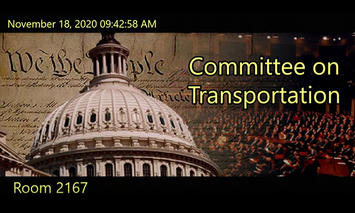
Amtrak ridership is down by 87 percent, so Amtrak needs a $2.9 billion rescue from Congress, the company’s executive vice president, Stephen Gardner, told a congressional subcommittee yesterday. Transit ridership is down 70 to 90 percent, added American Public Transportation Association president Paul Skoutelas, so the transit industry wants a $32 billion bailout from Congress.
Those are just their short-term demands, as was made clear in the hearing held by the House Subcommittee on Railroads, Pipelines, and Hazardous Materials. Both Amtrak and New York commuter railroads want $20 billion for the Gateway Project, which would replace bridges and tunnels between Newark and New York City. Transit agencies want $106 billion to restore their backlog of poorly maintained rail systems. And even that is only the beginning.
In testimony at this hearing, the Antiplanner pointed out that Americans ride Amtrak an average of just 19 miles a year, which is barely one-tenth of a percent of all passenger travel in the United States. Yet many other speakers waxed lyrical about how vital Amtrak was to the country. I pointed out that even in the Northeast Corridor, Amtrak has only 6 percent of the intercity travel market, with the vast majority of travel taking place on the highways. Yet others took it for granted that the entire Northeast would shut down if Amtrak weren’t running.
Amtrak is still running, but running mostly empty. Gardner admitted that it carried only 13,000 passengers on Tuesday, when in a normal year it would be 100,000. He also said that only 128 people got on board its long-distance trains that day. As far as I can tell, neither the Northeast Corridor nor any other part of the country is shutting down due to a lack of Amtrak riders. Yet Gardner asked Congress for money to restore the frequency of long-distance trains from three days to seven days a week.
The incongruity between asking for more money even as Amtrak and the transit agencies admitted that hardly anyone was using their services is completely typical of these politicized entities. An environmental webcast taking place today notes that “transit systems across the country have seen major declines in ridership” yet they “have not wavered on their climate and sustainability commitments.” What garbage! If they really cared about climate change, they would reduce their operations in parallel with reduced ridership. Instead, many are proud that they have actually increased their greenhouse gas emissions in the name of “social distancing.”
The ostensible reason for yesterday’s hearing was the preference that railroads are supposed to give Amtrak over freight trains. Gardner claimed that this was an agreement made by the railroads when Amtrak took over the passenger trains in 1971, but there is little evidence for that. The law that created Amtrak also specified that it was to be a “for-profit company,” which some have argued means that it wasn’t supposed to ever receive any subsidies. There is more evidence of that than the claim that the private railroads agreed to give passenger trains priority.
Read the rest of this piece at The Antiplanner.
Randal O'Toole (rot@ti.org) is a senior fellow with the Cato Institute analyzing land-use and transportation policies and the author of American Nightmare: How Government Undermines the Dream of Homeownership.
Photo: screenshot from video shown above.












